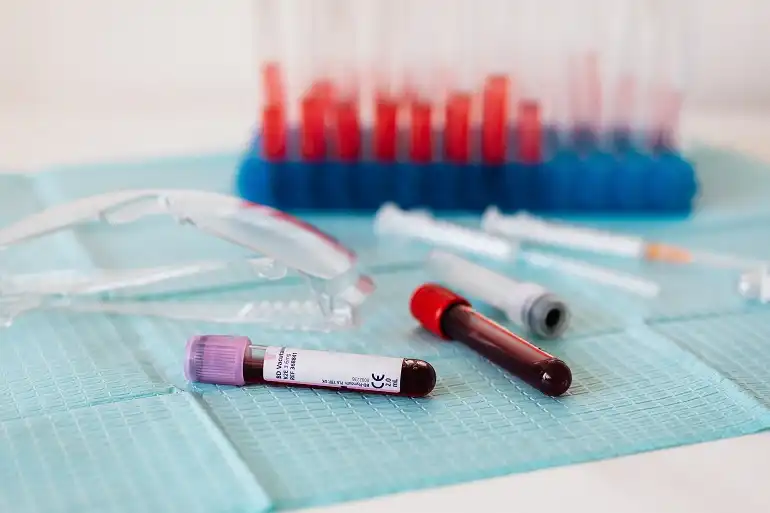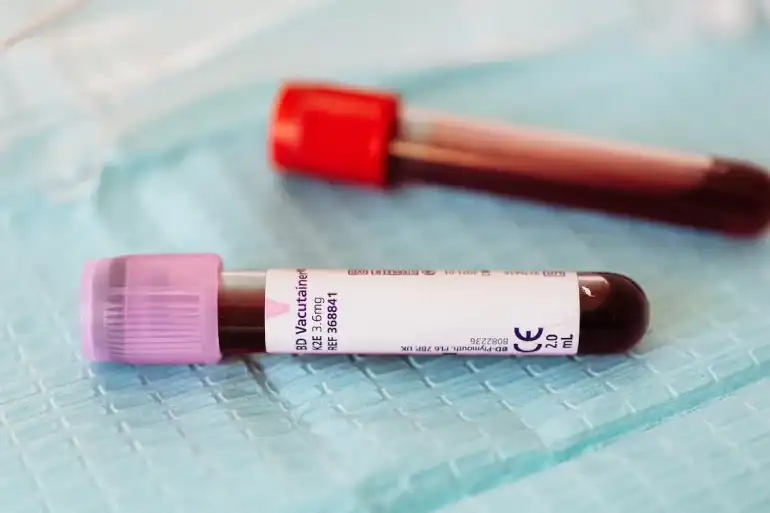Secreted within the pituitary gland of the body, human growth hormone is instrumental in supporting muscles, bones, and your whole body.
The lack of growth hormone could lead to various potentially severe physical symptoms and health issues.

Luckily, specialists may be able to avert such situations by promptly identifying and treating human growth hormone deficiency through the utilization of a growth hormone stimulation test.
We will guide you through the preparation for the growth hormone deficiency test, elucidate how the examination is conducted, outline what constitutes normal results, and discuss the cost of GH stimulation test.
What is a growth hormone stimulation test?
The growth hormone stimulation test evaluates the body’s capacity to generate HGH.
HGH production occurs in a pulsatile pattern, with the majority being produced during sleep. During waking hours, minimal or possibly no HGH is present in the blood, making it challenging to assess HGH levels.
Experts have devised techniques to determine whether there is insufficient HGH production by analyzing blood samples over a period following the stimulation of hormone production. If your HGH level fails to reach a specific range, it could indicate a deficiency in growth hormone.
Various stimulation methods can be employed in this test:
Insulin Stimulation: Insulin is considered the most potent and specific stimulant for GH. However, it might not be suitable for all men and women. This test is sometimes referred to as insulin-induced hypoglycemia. If your healthcare provider deems an insulin tolerance test appropriate, blood samples are collected at 30, 60, and 120 minutes after administering insulin.
Glucagon Stimulation: Glucagon is a suitable option for infants and young children as it is administered under the skin. Blood samples are taken approximately every 30 minutes within the 1 to 3-hour timeframe, with an expected peak in GH levels between 2 and 3 hours.
Clonidine Stimulation: Clonidine provides the quickest test, with peak GH secretion occurring about an hour after administration.
Macimorelin Stimulation: Macimorelin is a solution used in adults to stimulate GH. Blood samples are assessed at 30, 45, 60, and 90 minutes after consuming the solution.
Preparation for the Growth Hormone Stimulation Test
To ensure the accurate administration of the growth hormone stimulation test, individuals slated for the examination should adhere to specific preparatory guidelines, including:
Fasting: Individuals scheduled for the GH stimulation test should abstain from consuming food for a period ranging from 10 to 12 hours prior to the test. Eating before the exam can potentially twist the test results.
Medication Check: Certain prescription medications may impact the test results. Individuals scheduled for the test are advised to consult with their healthcare provider to ensure they are following an appropriate prescription medication regimen.
General Health: In some cases, the overall health of the prospective test recipient may be a consideration in determining whether the individual should undergo the exam as scheduled. For instance, if an individual is dealing with a virus or infection, the test may need to be postponed to a later date.
How GH Stimulation Test is Performed?
The growth hormone stimulation test is conducted by healthcare professionals through the extraction of multiple blood samples from the recipient. However, instead of employing repetitive needle pricks, the samples are obtained intravenously (IV).

Recipients of the test undergo the following steps:
— A physician inserts an intravenous line into a blood vessel, typically in the elbow or hand of the individual.
— Before drawing any samples, an antiseptic solution is applied to the injection site to minimize the risk of infections.
— Following the preparatory steps, the initial blood sample is collected.
— Subsequently, the recipient is administered drugs designed to stimulate the pituitary gland’s production of HGH.
— After the administration of the stimulating drug, healthcare providers continue to draw additional blood samples. This process spans a duration ranging from two to five hours.
— The final phase of the procedure involves the removal of the IV line, with pressure applied to the injection site to prevent or control bleeding.
Growth hormone stimulation test normal values
The acceptable range for normal results can vary depending on the laboratory or your healthcare provider. Generally, normal GH test results are categorized as follows:
— Normal value: at least 10 ng/mL (10 µg/L)
— Average: 5 to 10 ng/mL (5 to 10 µg/L)
— Below average: 5 ng/mL (5 µg/L)
A standard peak value measurement indicating normal growth hormone production is typically no less than 10 ng/mL. Normal readings generally suggest adequate HGH production and often exclude the possibility of underlying health conditions leading to hormonal deficiencies.
Individuals with growth hormone stimulation test results indicating 5 ng/mL or fewer are likely to receive a diagnosis of human growth hormone deficiency in adults. Further medical evaluation will be necessary to determine the underlying cause of this condition.
There may be slight variations in normal value ranges among different laboratories. Some labs might employ different measurements or test various samples. It is advisable to discuss the specific meaning of your test results with your healthcare provider.
Growth hormone stimulation test results interpretation
Test results can vary based on factors such as age, gender, health history, and other considerations. Your results may differ depending on the laboratory used, and they may not necessarily indicate a problem. It’s essential to consult your healthcare provider to understand what your specific test results mean for you.
Normal results are age-dependent, and all growth hormone deficiency tests take age into consideration. Lower levels of GH may suggest the presence of a pituitary tumor or hypopituitarism, a condition characterized by low hormone production by the pituitary gland, including GH.
In children, lower GH levels may be present from birth or may result from factors such as head trauma, a tumor, or radiation therapy. If a low GH level is not due to pituitary damage, some children may outgrow it by adolescence or young adulthood. Healthcare providers may consider retesting at various stages of a child’s development.
Growth hormone stimulation test side effects
Undergoing a blood test involving a needle poses certain risks, including the potential for bleeding, infection, bruising, and a sensation of lightheadedness.
In the initial 24 hours following your GH stimulation test, you may experience:
— Dizziness and lightheadedness
— Sleepiness
— Dry mouth
— Dry eyes or blurred vision
— Nausea (a sensation of potential vomiting)
During the first 24 hours after your test, it’s advisable to:
— Rise slowly after sitting or lying down.
— Exercise caution when climbing stairs.
— Refrain from activities requiring alertness or clear vision, such as sports.
Ensuring a good night’s sleep post your GH stimulation testing can contribute to alleviating these side effects. If these effects persist beyond 24 hours, it is recommended to contact your doctor’s office.
Growth hormone stimulation test cost
The expense associated with a growth hormone stimulation test is subject to variation based on the location and insurance coverage. On average, the cost ranges from $80 to $100 and may be encompassed within the overall expense of HGH therapy.
Several factors influence the overall cost of the examination, such as the type of facility conducting the test, the specific drugs administered to the patient, the duration of the procedure, and any additional special considerations necessary for the test’s completion.
After Your GH Stimulation Test
People with subnormal readings will need to undertake corrective measures, and the specific therapeutic protocols are employed by a doctor. For adults experiencing substantial deficiencies, the advised approach is HGH therapy.
If hormonal insufficiency is caused by an underlying medical problem, identifying and addressing that ailment could be beneficial.
For patients with slight deficiencies, implementing lifestyle changes and utilizing methods to increase human growth hormone naturally, such as adopting a healthy diet or using supplements like GenF20 Plus, might show effective.
